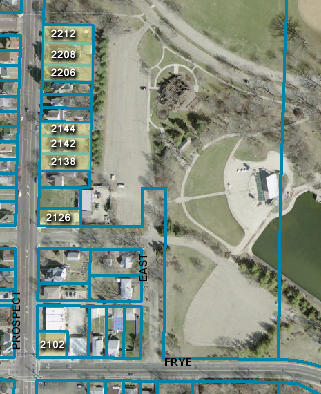Energetic Collaboration
Over 100 people (including me) showed up at the Ironfront Building Saturday morning at 8:30 to participate in the Ferrell-Madden-Associates-facilitated charrette. After some brief opening remarks, we all gathered in small groups at tables to discuss one of three topics: the Sheridan/Loucks Triangle, the Prospect Road Corridor, or the Heart of Peoria in general.
I sat at one of the “general” tables. The first thing we did was a “SWOT” analysis (Strengths, Weaknesses, Opportunities, Threats) — they didn’t call it that; I’m just using corporate lingo to describe it. Once we finished with that individual exercise, we got to work together and draw. The tables each had a large map of Peoria with the “Heart of Peoria” (HOP) area outlined and a large piece of tracing paper over it. We were given instructions to identify several things on the map, such as:
- Places that we considered beautiful and would like to see mimicked the rest of the HOP.
- Places that we felt were a huge mistake and should never be allowed to happen again (true story: as soon as that item was read, several of us at the table looked at each other and said in unison, “Campustown”).
- Special buildings we felt should be saved and/or copied.
- Buildings that were eyesores and should be torn down.
- Streets that work well and should be used as a template elsewhere.
- Streets that need improvement and how they could be improved.
This process was actually quite fun because it allowed all of us to put our ideas on paper and dream a little bit. There was the tendency for it to spiral into a complaining session, there’s no denying that, but I thought our group did a good job of staying positive. There were a lot of positive observations and ingenious ideas of what could be done to improve things in the older parts of the city.
Unfortunately, I had to leave early, so I didn’t get to see what happened next, but it’s my understanding that the facilitators tried to synthesize all the SWOT analyses and improvement plans among the “general” tables. They’ll use all that information to develop a form-based code — a regulatory document that will incorporate rules for how development should look in the older areas of town.
I can tell you from my experience that the room was buzzing — there was so much energy in that room Saturday morning, it was hard not to be inspired by all the citizen involvement. Will form-based codes solve all of Peoria’s problems? No. But there really isn’t any one thing — no silver bullet — that will solve all of Peoria’s problems. It will take a combination of efforts and, above all, time. But we have to start somewhere, and I would much rather see the city start with the citizens, getting our input, than hiring another “expert” consultant to tell us what we want. I think this is a step in the right direction.
Concern about gentrification
That said, there is one concern regarding New Urbanism that came up at both the meetings I attended this weekend that I believe deserves a fair hearing: negative effects of gentrification.
Gentrification happens when an area is improved so much that it becomes hot property and many people want to live there. A negative effect of this is that lower-income residents can’t afford to live there anymore due to rising housing and rental prices. In an effort to stabilize a neighborhood, the very people it was supposed to help end up being displaced by wealthier citizens who essentially take over the neighborhood.
When asked about this, Geoffrey Ferrell affirmed that it is something to be concerned about — but not right now, he added. He said that if/when the city’s efforts to revitalize the older neighborhoods become wildly successful, measures will need to be put in place to protect those areas from the negative effects of gentrification. However, that’s a long ways down the road.
Also, USA Today reported last year that conventional wisdom about gentrification may not be supported by the facts. Lance Freeman of Columbia University did a study comparing relocation rates of the poor in gentrified and non-gentrified areas of New York and found surprisingly little difference between them. In other words, the displacement of the poor is largely theoretical.
Still, it would be a good idea for Peoria to plan for success — that is, start considering now what Peoria will do to ameliorate any possible negative effects of gentrification in the Heart of Peoria. It’s always better to be proactive, if for no other reason than to help relieve the fears of lower-income residents of the inner city. When you get right down to it, this would be a wonderful problem for Peoria to have, insomuch as it would mean our efforts to revitalize the older part of the city were successful beyond our wildest imagination.

